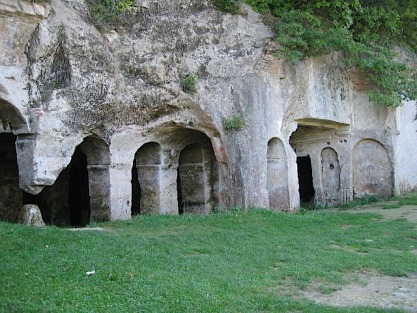Thracian wreckers’ hangout Population: 2,100
Old names: Salmydessos, Midye, Medea
Market day: Tuesday
On the north coast of Thrace, Kıyıköy (“Coast Village”) has an absolutely glorious setting which makes it rather odd that it’s not better known. It sits astride a headland which looks down, on one side, onto a smallish fishing harbour and, on the other, onto a thick swathe of sandy beach with, running inland from it, the gorgeous, peaceful Papuç and Kazandere rivers. The riverbanks are planted with gardens and backed by poplar trees offering a lovely, bucolic vista, a world away from the concrete over-development of much of the surrounding province.
Kıyıköy has survived in relative anonymity for two main reasons. Firstly, it’s time-consuming to get to, with access via minor roads traversed by infrequent buses. Secondly, it’s an obviously poor village, lacking the wherewithal either to protect its historic fabric or promote it effectively.
In 1912 Kıyıköy became part of Bulgaria after the First Balkan War, returning to the Ottomans in 1913. Briefly, the Enez-Midye Line ran through the middle of town, marking the border of the Ottoman Empire, until it was pushed further west after the Second Balkan War. Then in 1923 it lost its large Greek population in the population exchange, acquiring in its place a poor population of Turkish refugees.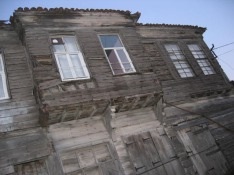
It’s hard to say much that’s positive about the drive out of İstanbul towards Kıyıköy until you reach Çergezköy whereupon the traffic starts to tail off and the concrete starts to thin out. Then you arrive in Saray and turn right for the sea. Suddenly you are in an entirely different world, the world of the densely wooded Yıldız Dağları (Star Mountains) with oak and beech trees pressing in on you from every side.
In 2020 the Turkish end of the Turkstream gas pipeline from Russia reached Kıyıköy. I have not been back to see how much it may have disturbed the area.
Around town
Like so many Turkish towns with a long history, Kıyıköy has more than its fair share of old wooden houses that must once have been delightful. Here, however, they are in an abject state of disrepair, held together with sheets of metal, that even the most optimistic lover of old buildings would probably have to concede are beyond restoration. Most of the buildings that hug the headland are also uninspiring or just plain ugly.
Down by the beach it’s disappointing to see structures built from materials that seem almost wilfully indifferent to the environment. Nor does it help that the shell of a never-completed düğün salonu (wedding salon) obtrudes into the otherwise picturesque view.
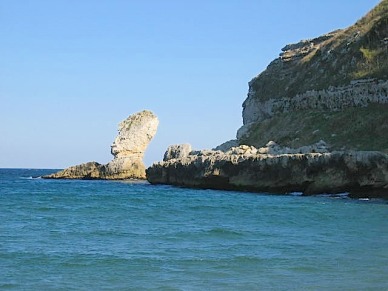 And yet there’s no escaping the sheer loveliness of the setting. Headland after headland unfolds into the distance, vaguely echoing the coastline of Cornwall in the UK. The sludgy green river has a languid beauty and boatmen will be waiting to offer you a leisurely cruise along waters fringed with poplars and reedbeds. No matter what the time of day it’s well worth taking them up on their offer, although the best time of all is early evening as the sun is setting gently over the sea.
And yet there’s no escaping the sheer loveliness of the setting. Headland after headland unfolds into the distance, vaguely echoing the coastline of Cornwall in the UK. The sludgy green river has a languid beauty and boatmen will be waiting to offer you a leisurely cruise along waters fringed with poplars and reedbeds. No matter what the time of day it’s well worth taking them up on their offer, although the best time of all is early evening as the sun is setting gently over the sea.
It’s hardly surprising that Kıyıköy is low on luxury shops and gourmet restaurants although the small Marina Cafe is a first attempt at something more chi-chi and has a great location overlooking the harbour. For sunset views, however, it would be hard to beat the simple Kartal Cafe which looks straight out over the beach and river.
Tip: Kıyıköy is popular with day-trippers. To appreciate the rural tranquility, avoid the school holidays when the beach will be jam-packed with parents and their fractious offspring.
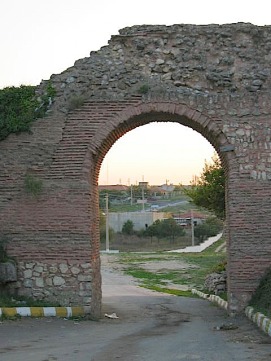 Around town
Around town
Kıyıköy was once a walled city and long stretches of the Byzantine walls still survive; indeed, the main entrance to the town centre is via a gate in the walls as in İznik. The walls seem to date back to the sixth century but were extensively rebuilt in the 13th or 14th century.
Down by the river, tucked away amid the hedgerows, is a truly astonishing sight – the rock-cut monastery of Ayanikola (St Nicholas) which also dates back to the sixth century. This is a complex rather like those in better known Cappadocia. Deep inside the rock you will find the remains of a church alongside rock-cut columns complete with decorative capitals.
Here, too, there was a sacred spring (ayazma) where the sick bathed in the hope of a cure; hundreds of tiny crosses etched into the rock are a reminder of their visits.
In the 19th century resident Greeks apparently added a wooden porch to the front of the monastery but this hs long since vanished.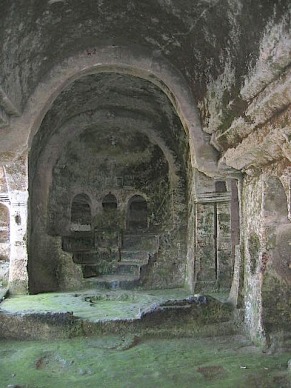
Eating
Scattered about in the surrounding woodland are numerous small restaurants where you can dine on the trout reared in local fish farms.
For those heartily sick of İstanbul prices costs will come as a revelation. Stop in one of the headland tea gardens for a drink and you won’t find Starbucks’ prices. Drop in on a local lokanta and a plate of a classic Turkish favourite such as köfte (meatballs) with freshly-grown veg is unlikely to bust your budget.
Sleeping
Deniz Motel & Restaurant Tel: 0288-388 6452
Transport info
Take a bus from İstanbul’s Esenler otogar to Saray or Vize and change to a dolmuş for Kıyıköy.
Day trip destinations
